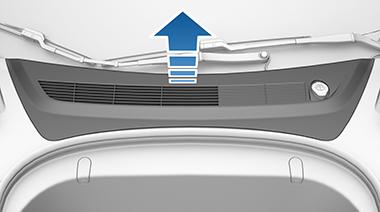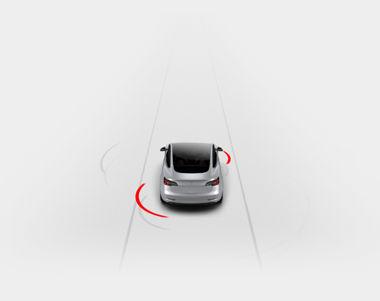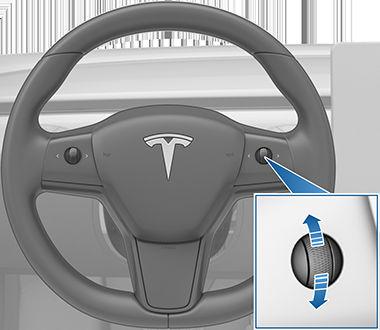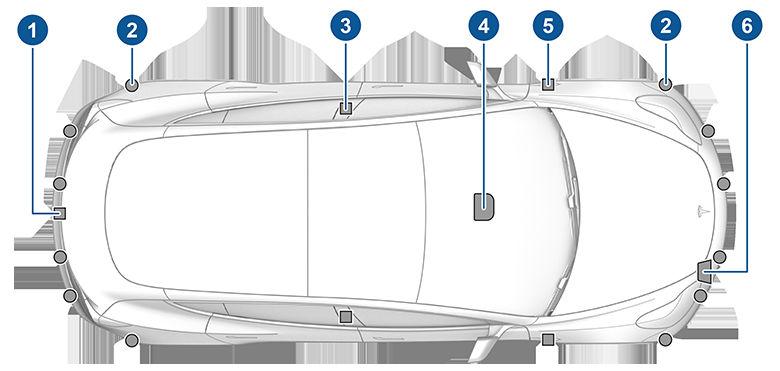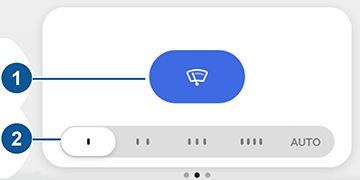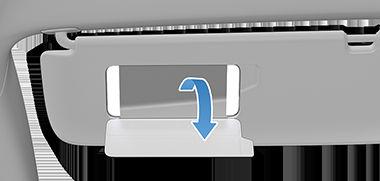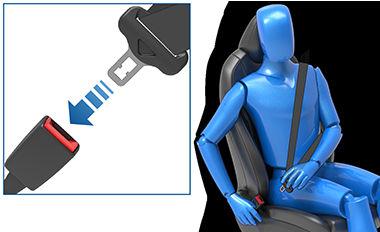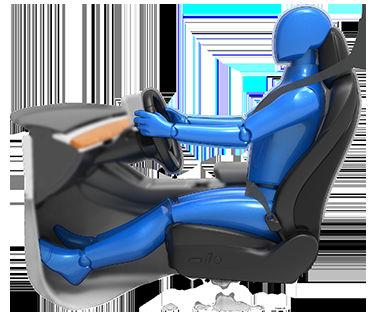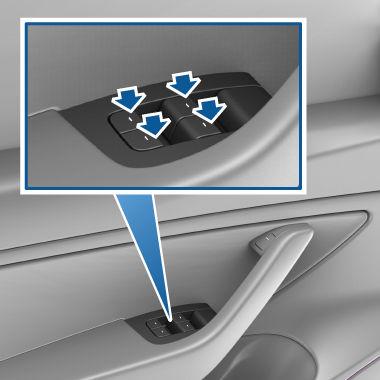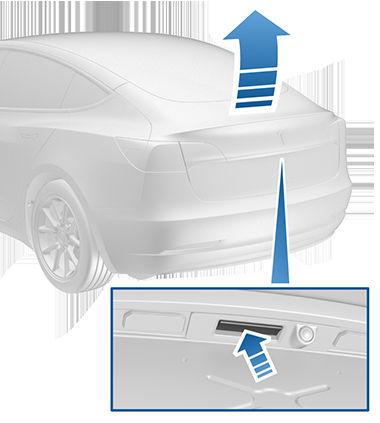HomeLink Universal Transceiver About HomeLink If your vehicle is equipped with the HomeLink® Universal Transceiver, you can operate up to three Radio Frequency (RF) devices, including garage doors, gates, lights, and security systems. NOTE: Depending on date of manufacture, market region, and options selected at time of purchase, some vehicles are not equipped with a HomeLink Universal Transceiver. WARNING: Do not use the HomeLink Universal Transceiver with a device that does not have safety stop and reverse features. Using a device without these safety features increases the risk of injury or death.
Supported Modes HomeLink supports three different transmit modes, which is how your vehicle and the RF device communicate. Selecting a transmit mode is determined by your RF device's compatibility: • Standard Mode: Use Standard Mode if your RF device is equipped with a remote control that must be used to operate the device (for example, a remotecontrolled garage door). This mode is the most commonly used transmit mode for HomeLink devices. • D-Mode or UR-Mode: Use D-Mode or UR-Mode if the RF device does not have a remote control, and the receiver has a "Learn" button (may also be called "Program" or "Smart"). D-Mode and UR-Mode function similarly in that Model 3 communicates directly with the device's receiver as opposed to the remote control. NOTE: D-Mode is used primarily in North America whereas UR-Mode is popular in Europe, the Middle East, and Asia. To determine the mode your device is compatible with, contact HomeLink (www.homelink.com or call 1-800-355-3515). Each of your devices can be set to a different mode. For example, your garage door can be set to Standard Mode, your front gate can be set to D-Mode, etc. To change a transmit mode, touch the HomeLink icon at the top of the touchscreen and select the device you want to change. Then, select Program and choose the desired mode for your device. Confirm by touching Set Mode and follow the onscreen instructions. For older vehicles, changing the mode for one device changes the mode for all devices, so be careful when changing transmit modes. Devices not compatible with your selected mode may not work. Touch the HomeLink icon at the top of the touchscreen, then touch Change Transmit Mode.
Using the Touchscreen
NOTE: Check the product information for your HomeLink device to determine which mode is compatible with your device.
Programming HomeLink To program HomeLink®: 1. Park Model 3 so that the front bumper is in front of the device you want to program. CAUTION: Your device might open or close during programming. Therefore, before programming, make sure that the device is clear of any people or objects. 2. Check that the device's remote control has a healthy battery. Tesla recommends replacing the battery in the device's remote control before Programming HomeLink. 3. Touch the HomeLink icon at the top of the touchscreen. 4. Touch Create HomeLink. 5. Select the mode you wish to use: Standard, D-Mode, or UR-Mode (see Supported Modes on page 153). 6. On the touchscreen, enter a name for your device, then and touch Enter or Create HomeLink. 7. Touch Start and follow the onscreen instructions. NOTE: If you see a screen called “Train the receiver” while programming the device, remember that this is a time-sensitive step. After pressing the Learn/ Program/Smart button on the device's remote control, you have only approximately 30 seconds to return to your vehicle and press Continue, and then press the trained HomeLink device name twice. Consider having an assistant to ensure you can complete this step within 30 seconds. 8. Once your device is programmed, touch Save to complete the programming. 9. Ensure HomeLink works as expected. In some cases, you may need to repeat the programming process multiple times before succeeding. Once programmed, you can operate the device by touching its corresponding HomeLink icon on the touchscreen. HomeLink remembers the location of your programmed devices. When you approach a known location, the HomeLink control on the touchscreen automatically drops down. When you drive away, it disappears. NOTE: For additional assistance or compatibility questions, contact HomeLink (www.homelink.com or call 1-800-355-3515).
153








